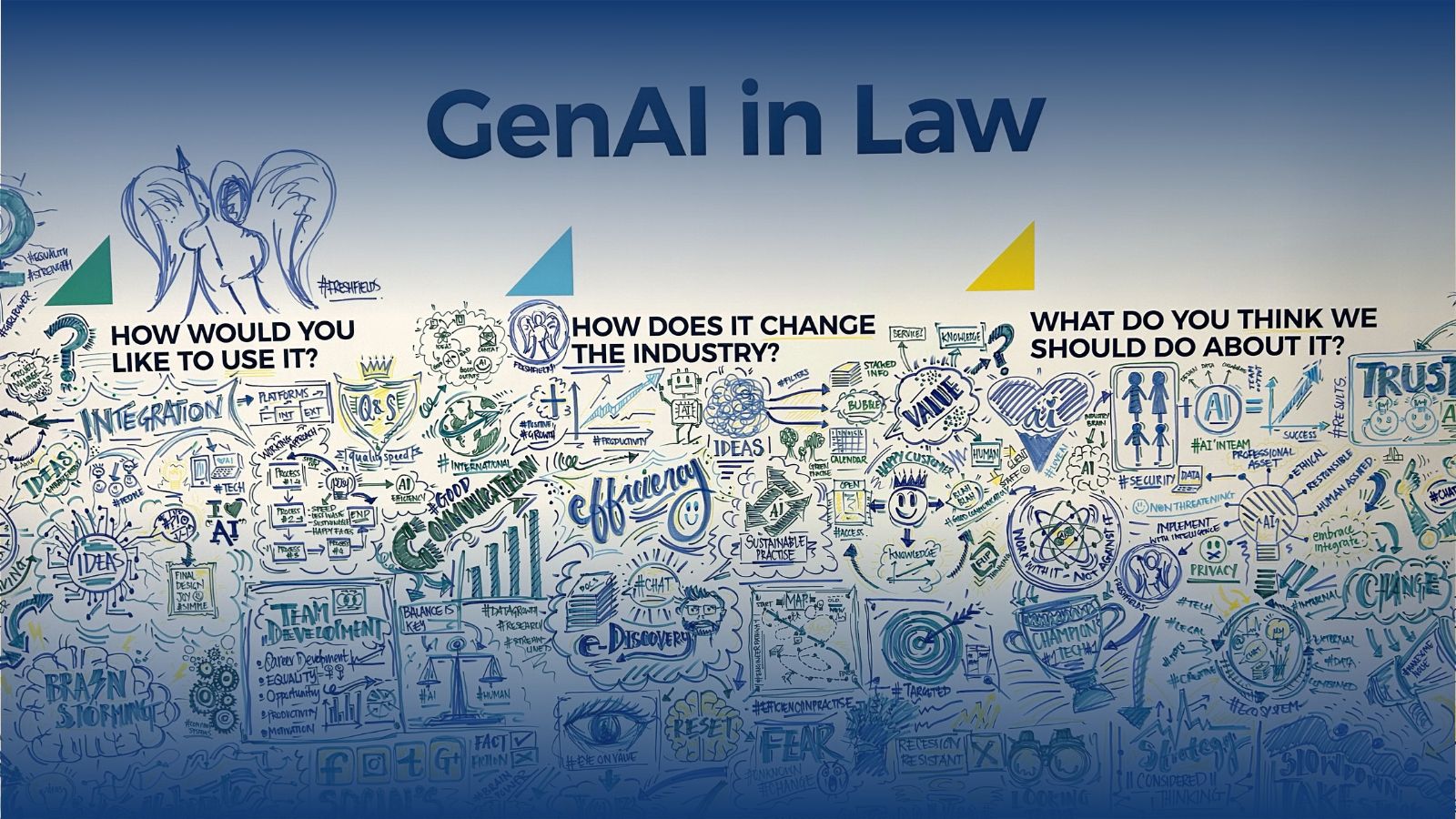Last week Blue Hat Associates attended the Legal Geek Conference – Europe’s largest legal tech conference celebrating lawtech and innovation. The key theme this year was Generative AI in Law. Martin Gill shares his key takeaways from the event.
Celebrating innovation in legal technology
Hosting 132 speakers and 2500 attendees, it was a ‘jam-packed’ two days exploring advancements in lawtech and technology innovation.
From inspiring speakers and hands-on sessions to practical advice and networking – if you work in #legaltech then it’s a conference not to be missed. We’re already signed up for next year’s conference.
All about GenAI
Generative artificial intelligence was the central theme this year – hardly anyone talked about anything else. It was on every poster advertising, most of the talks covered it and there was even a wall mural visualising the varied talking points and opinions on the topic.
Many people were worried about how much they should be investing in GenAI. With the market evolving rapidly, there were concerns about where things will be in a year’s time.
Speakers questioned if we’re on the brink of an unparalleled transformation in the legal sector – and what that future looks like. And how do we build for it? Google’s Steve Gong summarised the mood with his talk “The AI leapfrog moment: Reimagine, redesign and re-create the future of legal work”.
> Delegates expressed concern about the cost implications of OpenAI. Blue Hat has been working in Regulatory Tech in this area. We’ve identified, and built, a hybrid solution using OpenAI – using it for what it does best but greatly reducing costs while improving accuracy.
> There were concerns about data privacy. With the increasing amount of sensitive client information stored electronically, legal firms are prime targets for cyberattacks. Protecting data and ensuring compliance with data protection regulations are ongoing challenges.
> And there were also concerns about the hallucinogenic output from OpenAI and LLMs. There were several alternatives discussed at the event including variations of Co-Pilot technology, an area where Blue Hat has been working recently.
> As far as technological innovations, most vendors seem to be tagging on a light ChatGPT interface to their existing product. It will be interesting to see how products evolve over the next 6-12 months.
A pragmatic approach wins the day.
The main takeaway from an interesting two days discussing the potential of Generative AI within the legal sector is that although it’s exciting and new, it’s the traditional problems with technology still need to be overcome.
-
Sort your data out first.
The phrase “garbage in garbage out” rings true. Unless companies first focus on sorting out their data and integration (for example, indexing PDF documents) they’ll struggle to realise the benefits of GenAI. You can’t rely on the ChatGPT “magic” to sort it out for you.
-
Focus on the business problem you are solving for.
Companies must focus clearly on the business problem they are trying to solve. It can be tempting to get hyper-focused on the technology and lose sight of the business problem and goals. Technology adoption is one of the big challenges the legal sector is facing, but not the only one. Changing client expectations, talent recruitment and retention and regulatory changes remain significant challenges legal firms are facing.
-
Start small, test, learn, then evolve.
Another temptation is to jump in feet-first. GenAI is a new, exciting, and disruptive technology. The potential benefits are enticing. However, adoption is not always about the technology – it’s mostly about people. Starting with a clearly defined prototype where you can prove real value, and then build from there, brings your people with you (shareholders, customers, employees).
How do we move forward?
In summary, the hype around generative AI in the legal sector is peaking. The potential to transform the sector is compelling – if companies take a pragmatic approach.
There are several hurdles to overcome that will require collaborative teams working together to address privacy concerns, cost management and user adoption.
Our advice is to focus on your most pressing business problems, sort out your data and integrations first, prototype solutions and carefully roll out new solutions to ensure successful adoption and business results. It’s an approach our clients value and one that helps organisations realise their technology objectives.
To find out more about how to use OpenAI tips on how to structure data and ultimately to remove hallucinations, speak to our Legal Partner Martin Gill or CEO Tim Palmer to arrange an initial discussion about your data and technology challenges and ambitions.

